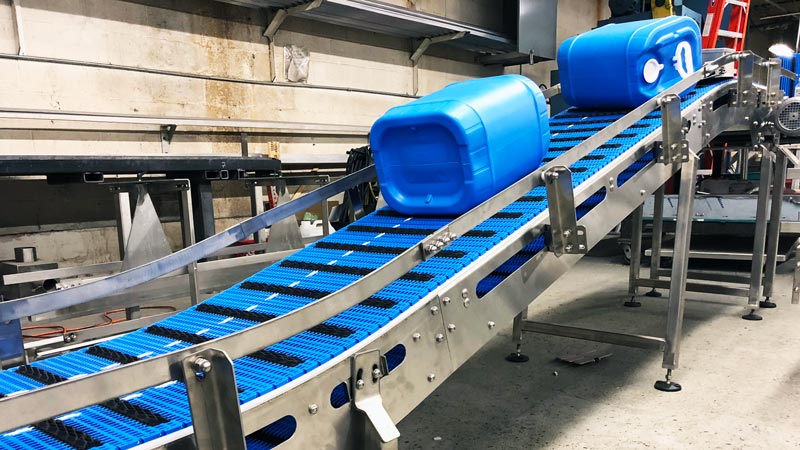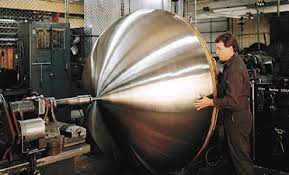Molding Design: The Unsung Hero Of Manufacturing
Molding Design: The Unsung Hero of Manufacturing
Related Articles: Molding Design: The Unsung Hero of Manufacturing
Introduction
In this auspicious occasion, we are delighted to delve into the intriguing topic related to Molding Design: The Unsung Hero of Manufacturing. Let’s weave interesting information and offer fresh perspectives to the readers.
Table of Content
Molding Design: The Unsung Hero of Manufacturing

The world of manufacturing is filled with intricate processes, and at the heart of many lies a crucial component: the mold. These specialized tools, meticulously crafted to shape raw materials into desired forms, are the backbone of countless industries. From the simple plastic bottle to the complex engine block, molds enable the creation of objects that shape our daily lives.
But how are these molds designed? The answer lies in the realm of computer-aided design (CAD), where specialized software tools empower engineers to create intricate and precise mold geometries. These digital representations, known as mold design CAD blocks, are the foundation of efficient and successful mold manufacturing.
Understanding the Importance of Mold Design CAD Blocks
Mold design CAD blocks are more than just digital blueprints; they are the embodiment of meticulous planning, technical expertise, and innovation. Their significance lies in their ability to:
- Streamline the Design Process: CAD blocks allow for rapid prototyping and experimentation, enabling engineers to explore various design options and optimize the mold’s performance before physical production. This iterative process saves time, reduces costs, and ensures a more efficient design cycle.
- Enhance Accuracy and Precision: The inherent precision of CAD software ensures that mold designs are created with exceptional accuracy. This minimizes the risk of errors during manufacturing, leading to consistent and high-quality molded products.
- Facilitate Collaboration: CAD blocks serve as a common language for engineers, designers, and manufacturers. They enable seamless information sharing, ensuring everyone involved has access to the latest design revisions and crucial details.
- Optimize Manufacturing Efficiency: Well-designed molds translate into efficient production processes. By incorporating features like optimized cooling channels and ejection systems, CAD blocks contribute to faster cycle times, reduced waste, and increased overall productivity.
Exploring the Anatomy of a Mold Design CAD Block
A typical mold design CAD block comprises several key elements, each playing a crucial role in its functionality and performance:
- Cavity: This is the primary part of the mold, defining the exact shape and dimensions of the final molded product.
- Core: This component forms the internal features of the molded part, often used to create holes, cavities, or other complex geometries.
- Gate: This opening allows the molten material to enter the cavity, ensuring proper filling and preventing defects.
- Ejection System: This mechanism facilitates the removal of the molded part from the cavity after solidification.
- Cooling Channels: These channels circulate coolant through the mold, controlling the temperature and ensuring proper solidification of the material.
- Support Structures: These elements provide stability and rigidity to the mold, preventing distortion and ensuring accurate molding.
The Power of Parametric Modeling in Mold Design
Parametric modeling, a cornerstone of modern CAD software, empowers engineers to create dynamic and adaptable mold designs. This approach utilizes parameters and relationships to define the mold’s geometry, allowing for easy modifications and adjustments.
For example, changing a single parameter, such as the diameter of a hole, automatically updates all related dimensions throughout the design. This ensures consistency, reduces errors, and facilitates quick design iterations.
The Benefits of Using Mold Design CAD Blocks
The benefits of using mold design CAD blocks extend beyond the design phase, impacting the entire manufacturing process:
- Reduced Costs: By optimizing the design and minimizing errors, CAD blocks contribute to lower material consumption, reduced tooling costs, and fewer manufacturing defects.
- Improved Product Quality: The precision and accuracy of CAD designs translate into consistent and high-quality molded products, meeting stringent quality standards.
- Faster Time to Market: The streamlined design process and reduced iteration cycles enable faster product development and quicker market launches.
- Enhanced Design Flexibility: Parametric modeling allows for easy modifications and adjustments, enabling engineers to quickly adapt designs to changing requirements or customer needs.
Frequently Asked Questions About Mold Design CAD Blocks
Q1: What CAD software is best suited for mold design?
A: Several industry-leading CAD software packages are well-suited for mold design, including:
- SolidWorks: Known for its user-friendly interface and powerful parametric modeling capabilities.
- Autodesk Inventor: Offers advanced features for mold design, including complex surface modeling and analysis tools.
- Siemens NX: A comprehensive CAD/CAM/CAE solution with advanced features for mold design and manufacturing.
- PTC Creo: Provides a robust platform for mold design, with emphasis on collaboration and data management.
Q2: How do I choose the right CAD software for my needs?
A: The choice of CAD software depends on factors such as:
- Project complexity: For simple molds, a basic CAD package may suffice. Complex designs require advanced features and capabilities.
- Industry standards: Some industries have specific software requirements or preferences.
- Budget: Software licenses can range in price, so consider the financial constraints.
- User experience: Choose software that is easy to learn and use, particularly for new users.
Q3: What are the common file formats used for mold design CAD blocks?
A: Common file formats for mold design CAD blocks include:
- STEP (Standard for the Exchange of Product model data): A neutral file format that ensures compatibility between different CAD systems.
- IGES (Initial Graphics Exchange Specification): Another neutral format that facilitates data exchange between CAD applications.
- DWG (Drawing): The native file format for Autodesk AutoCAD, widely used in the manufacturing industry.
- DXF (Drawing Exchange Format): A vector graphics format that can be used to exchange design data between different CAD applications.
Q4: What are the challenges associated with using mold design CAD blocks?
A: Some challenges associated with using mold design CAD blocks include:
- Learning Curve: Mastering the intricacies of CAD software can require time and effort.
- Software Cost: High-end CAD software packages can be expensive, especially for small businesses.
- Data Management: Managing large CAD files and maintaining version control can be challenging.
- Technical Expertise: Designing molds requires specialized knowledge and experience in mold engineering.
Tips for Effective Mold Design Using CAD Blocks
- Start with a Clear Design Brief: Define the product requirements, material properties, and manufacturing processes before beginning the design.
- Utilize Parametric Modeling: Take advantage of parametric modeling to create dynamic and adaptable designs.
- Optimize Cooling Channels: Properly designed cooling channels ensure efficient heat dissipation and prevent defects.
- Consider Ejection Systems: Choose appropriate ejection systems for smooth and efficient part removal.
- Perform Virtual Simulations: Use simulation software to analyze mold performance and identify potential issues before physical production.
- Collaborate with Manufacturers: Involve mold manufacturers early in the design process to ensure feasibility and manufacturability.
- Maintain Version Control: Use a system to track design changes and revisions, preventing errors and ensuring consistency.
Conclusion
Mold design CAD blocks are an essential tool for modern manufacturing, enabling engineers to create precise, efficient, and innovative molds. Their impact extends far beyond the design phase, influencing product quality, manufacturing efficiency, and overall cost-effectiveness. By embracing the power of CAD technology, manufacturers can unlock new possibilities in mold design, leading to improved products, faster development cycles, and enhanced competitiveness in the global marketplace.








Closure
Thus, we hope this article has provided valuable insights into Molding Design: The Unsung Hero of Manufacturing. We hope you find this article informative and beneficial. See you in our next article!
You may also like
Recent Posts
- The Art Of Persuasion: A Comprehensive Guide To Makeup Product Label Design
- A Comprehensive Look At Mary Kay Cosmetics: Reviews, Insights, And Considerations
- Affordable Skin Care: A Guide To Effective Products Under INR 100
- Navigating The World Of Mary Kay Discounted Products: A Comprehensive Guide
- The Power Of High-Resolution Images: A Guide To Acquiring The Best Visuals For Your Projects
- The Power Of Reviews: Navigating The World Of Makeup Products
- Swiss Beauty Makeup: A Comprehensive Guide To Quality And Affordability
- Embracing Natural Beauty: Makeup Tips And Techniques For Women Over 50
Leave a Reply